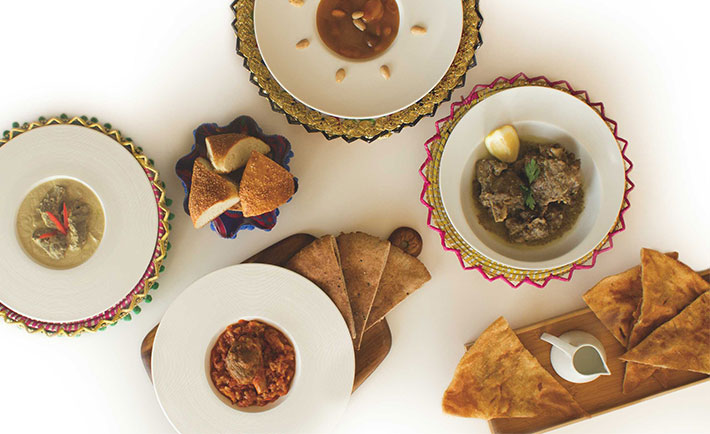By Ahmad Mesawa
Let’s go back in time and learn about traditional Hijazi Eid Al Fitr breakfast.
It is a tradition, in most Hijazi homes, to stay up all night after breaking the last fast to prepare for Eid Al Fitr. After the festive Eid prayer in the early light of dawn, all members of the family visit the oldest family member for a breakfast celebration (Futoor Al Eid).
This festive feast serves as a combination of both dinner and breakfast, and is a celebration of the success and hard work of Ramadan.
Debyazah
Egyptians call it Khushaf, but the origin of this dish is linked with the Turkish Hosaf, meaning water. It is rich and thick and the mix of fruits, nuts and dried apricot seeds (Qamar AlDin) add to the texture and flavor of Debyazah.

Naddi
This simple dish gets its name from the manner in which the fresh lamb meat is cooked. The word Naddi literally means “dewy.” The name of this dish differs from region to region.

Munazzalah
Munazzalah is a combination of tahini and a source of protein like eggplant or lamb chunks. The combination differs depending on the cities of Hijaz.

Makmoor
The name literally means “covered tightly” and this reflects the cooking technique used in this zucchini-based tomato stew, which also includes lamb, sugar and a small amount of rice. It is served with Feta cheese to enhance flavors and texture.

Zalabiah
Hijaz’s own sweet and savory dumpling/wanton, Zalabiah is a large crispy fried dough served with a dipping syrup.
There is more to food than just taste and human need. It functions as a celebratory symbol, a bonding element in homes and an artifact of human culture.












